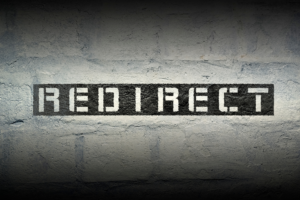Do You Need to Remove Outdated Content?
Think of the last time you looked up a restaurant and found that the hours, menu, or delivery information had changed. You were probably very frustrated and maybe uttered some choice words!
Customers rely on businesses to keep their websites relevant and up-to-date. Outdated or irrelevant content may result in low clickthrough rates, limited traffic, and, eventually, a lower Google ranking. It’s also a reputation management concern if your business starts to be known for its incorrect information.
Read on to learn more about the hows and whys of outdated content and how BRANDefenders can help!
Why Do You Need to Remove Outdated Content?
Google makes core updates to its search engine algorithm about every 2-3 months. That may sound like a lot, but it’s important to keep the information provided to consumers fresh.
It still creates headaches for businesses that rely on SEO, though. Your website needs to constantly change to conform to new rules or risk getting left behind on the second page of results.
The major risk to SERP from out-of-date content will be that customers simply won’t think your website is reliable and useful. Even if the rest of your site is good, one outdated page may send customers back to the search engine results and ultimately to another company.
Content Needs to Be Relevant
 The bigger problem with outdated content, though, is that it simply doesn’t meet consumers’ needs. If consumers are presented with outdated information on the page, they’re likely to leave and stay away. Think of the restaurant example from earlier – you probably wound up going somewhere else for dinner!
The bigger problem with outdated content, though, is that it simply doesn’t meet consumers’ needs. If consumers are presented with outdated information on the page, they’re likely to leave and stay away. Think of the restaurant example from earlier – you probably wound up going somewhere else for dinner!
Customers navigating away from your site will result in a drop in your SERP. The bounce rate, or the number of people who leave your site after reading just one page, is likely to increase. Clickthroughs will likely decrease.
You may also see a decrease in organic traffic to your site. It can be hard to get out of the SEO doldrums once irrelevant content starts pushing your results down.
How Can You Tell If Content Is Outdated?
There’s no direct “outdated content” metric on Google Analytics. Instead, you should look at a few factors to determine if your content is outdated.
Backlinks
Before you do anything else with a particular page, check the backlinks. These are vital for building good SEO but can be hard to come by. You shouldn’t delete a page with a lot of backlinks unless there’s an overwhelming need to do so.
How do you get around this? Pages with backlinks should be rewritten and updated as needed in order to keep the backlinks while providing accurate information. See more about repurposing content below.
Traffic
Traffic statistics are a great way to tell at a glance which pages on a site might be outdated. Google Analytics has tools to help you show which pages get the fewest hits.
If you see a page with outdated information but fairly good traffic statistics, you may just want to rewrite or update it instead of deleting it. If the page has little traffic, though, it might be better to delete it or replace it with another page.
Deleting a page isn’t the end of your work. The best practice for reputation management is to build a custom 404 page that fits your brand’s image and directs customers to the right information. You can also instead go with a 301 redirect that automatically takes the user to the right page.
Page Information
As your business grows and develops, the information on your website needs to change. Hours and policies should be current, outdated employee profiles need to be removed, and blog posts should reflect the most up-to-date knowledge, especially around legal or medical issues.
Your business should have a policy of periodically updating the information available online. Additionally, any big change should come with a plan to update or remove any outdated information. This is just part of reputation management for your business.
How Do You Remove Outdated Content?
There are a few main strategies businesses and reputation management firms use to deal with outdated content. The one you choose depends on what else your metrics say about the page.
Repurpose
If a page has a lot of backlinks or organic traffic, repurposing is the way to go. This strategy can be as simple as simply updating a date or rewriting a list of services.
But repurposing can also be bigger than that. You can rewrite a blog post to make it punchier and include more clickthrough links, for instance. Or, you can turn a text-heavy page into an infographic or video.
You still want to make sure that the page is broadly on the same topic, especially if it’s a page with a lot of backlinks. Otherwise, Google will think you’re spamming the algorithm and rank the page lower.
You can keep track of how your repurposed page is performing by knowing how often Google crawls your pages and checking in after that. If the page in question starts to rank higher, you know you’ve done a good job.
Redirect
 Redirecting simply means inserting code that sends the user to another page. Let’s go back to the restaurant example – perhaps the restaurant has decided to stop serving lunch and now only serves a dinner menu.
Redirecting simply means inserting code that sends the user to another page. Let’s go back to the restaurant example – perhaps the restaurant has decided to stop serving lunch and now only serves a dinner menu.
You might decide to redirect the “lunch menu” page to one with the dinner menu. You may also want to insert text on the dinner menu page explaining the change.
You can also use a 301 redirect to send customers to a page with better SEO stats like traffic or backlinks. This may help to further boost those pages up the results.
Noindex Tag
If you decide to keep an outdated page on your site for whatever reason, you can still improve your SEO by giving Google instructions not to index it. You do this by removing the URL from your site map (and anywhere else it’s referenced) and adding a no-index tag.
This essentially tells Google that the page shouldn’t come up in search rankings while still allowing people to read the site if they have the URL. But why use the no-index tag at all?
This tag is useful for a product that is out of stock with an uncertain return date. You hope to sell the product again, but you don’t want consumers finding that page and getting disappointed they can’t get it.
It’s also helpful if there’s a portal on your public site that allows you to access an internal network or confidential info. Your employees need this information, but it’s not relevant to customers.
Creating Evergreen Content
Evergreen content is any content that’s written to stay fresh and relevant for a long period of time. Not everything on your site can be evergreen, but a lot of it should be.
Because evergreen content is generally left up for a long period of time, it can provide more of an SEO boost to your site than an equally well-written but a newer piece. It also helps you minimize how often you need to remove outdated content.
How do you create evergreen content, though? There are a few key principles.
- Stick to core topics related to the business. You can do an FAQ for customers or an article devoted to explaining your industry to outsiders. Blogs can be a great way to build up evergreen content in this way.
- Research! This means knowing what your customers’ needs are and writing pages to address them. But it also means writing well-researched pieces that provide solid information and include citations when needed. Articles should also link to authoritative sources.
- Write for humans. You want the Google bots to score your page well, but you must also write for real people. This means ensuring that layouts have plenty of whitespaces and that the article is both entertaining and easy to read.
- Do SEO basics. While SEO may change several times a year, a lot of the basics are constant. Include keywords in headings, add relevant internal links and authority sources, and give the page a clear structure.
How BRANDefenders Can Help
As this article makes clear, removing or revising outdated content is a key part of SEO specifically and reputation management more generally. It’s a big task, but it doesn’t have to be overwhelming, especially if you have help.
BRANDefenders will help you to identify pages on your site that contain irrelevant or outdated information, determine the best strategy for improvement, and implement the plan. We work with clear markers of SEO improvement that allow you to track the job we do and communicate your concerns.
Final Thoughts
As we saw in 2020 and after, business information can get outdated fast. If you don’t think about SEO when making these changes, your bottom line could suffer.
Get in touch with BRANDefenders today for a free SEO audit and learn how we can help you remove outdated content!




